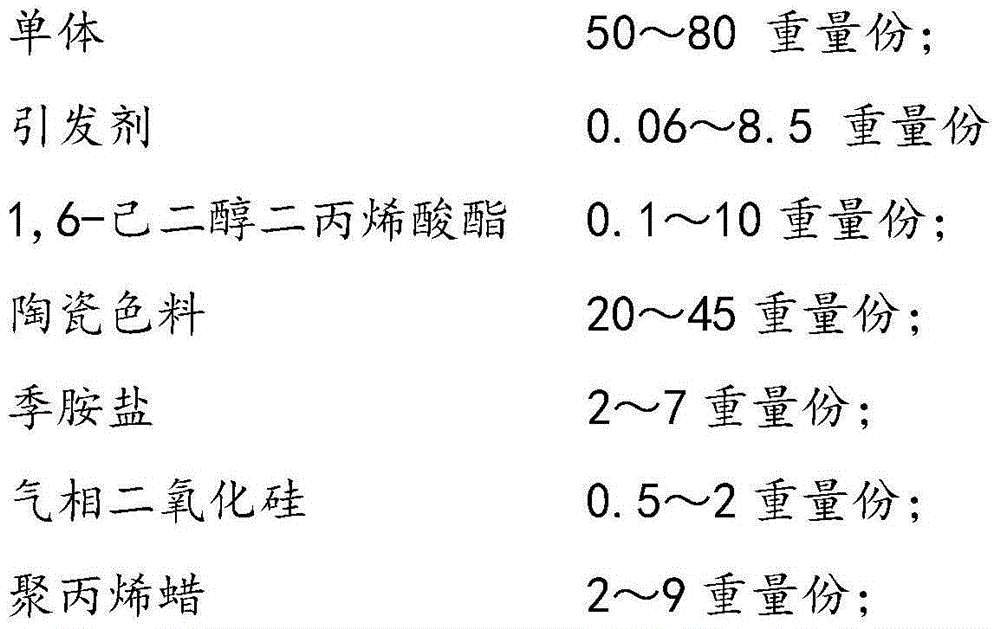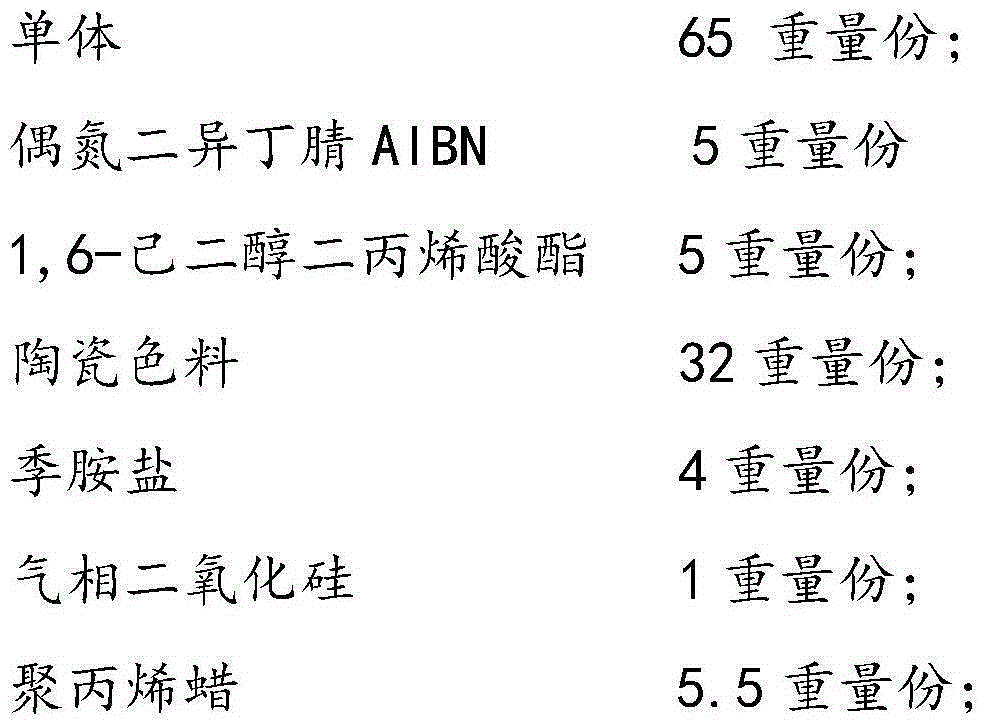Colored ceramic ink powder for mass-polymerization architectural ceramic and preparation method thereof
A technology of architectural ceramics and bulk polymerization, which is applied in the field of ceramic printing, can solve the problems of irregular shape of toner particles, inability to print high-resolution images, and high cost of high-quality color pictures, and achieve fine particle appearance, large market prospects and Effects of Economic Value, High Level Contrast and Developing Density
- Summary
- Abstract
- Description
- Claims
- Application Information
AI Technical Summary
Problems solved by technology
Method used
Image
Examples
Embodiment 1
[0022] Example 1 This example discloses a bulk polymerized color ceramic toner for architectural ceramics, which includes the following components:
[0023]
[0024] Wherein, the monomers include acrylic ester compounds and styrene monomers, the weight ratio of the two is 1:4-6, and the monomers are polymerized in bulk to form a binder resin. By adjusting the ratio between the monomer components, The glass transition temperature of the resulting resin is 65-95°C, and the softening temperature is 100-160°C.
[0025] The initiator is a compound initiator composed of a low-temperature initiator and a high-temperature initiator.
[0026] The initiator is an azo initiator, or a peroxide initiator, or a mixture of an azo initiator and a peroxide initiator.
[0027] The azo initiator includes azobisisobutyronitrile AIBN, azobisisoheptanonitrile and dimethyl azobisisobutyrate;
[0028] The peroxide initiator includes: benzoyl peroxide BPO, benzoyl tert-butyl peroxide TBPB, 2-ethy...
Embodiment 2
[0029] Example 2 This example discloses a bulk polymerized color ceramic toner for architectural ceramics, which includes the following components:
[0030]
[0031] Wherein, the monomers include acrylic ester compounds and styrene monomers, the weight ratio of the two is 1:5, and the monomers are polymerized in bulk to form a binder resin. By adjusting the ratio between the monomer components, the resulting The resin has a glass transition temperature of 80°C and a softening temperature of 130°C.
Embodiment 3
[0032] Example 3 This example discloses a bulk polymerized color ceramic toner for architectural ceramics, which includes the following components:
[0033]
[0034] Wherein, the monomer includes lauryl methacrylate and styrene monomer, and the weight ratio of the two is 1:6. The monomers are bulk polymerized to form a bonding resin, and the glass transition temperature of the resulting resin is 65° C., and the softening temperature is 160° C. by adjusting the ratio of the monomer components.
PUM
| Property | Measurement | Unit |
|---|---|---|
| particle diameter | aaaaa | aaaaa |
| glass transition temperature | aaaaa | aaaaa |
| softening point | aaaaa | aaaaa |
Abstract
Description
Claims
Application Information
 Login to View More
Login to View More - R&D
- Intellectual Property
- Life Sciences
- Materials
- Tech Scout
- Unparalleled Data Quality
- Higher Quality Content
- 60% Fewer Hallucinations
Browse by: Latest US Patents, China's latest patents, Technical Efficacy Thesaurus, Application Domain, Technology Topic, Popular Technical Reports.
© 2025 PatSnap. All rights reserved.Legal|Privacy policy|Modern Slavery Act Transparency Statement|Sitemap|About US| Contact US: help@patsnap.com



